Coalesse: Inside look at Biophilia in Workplace Design
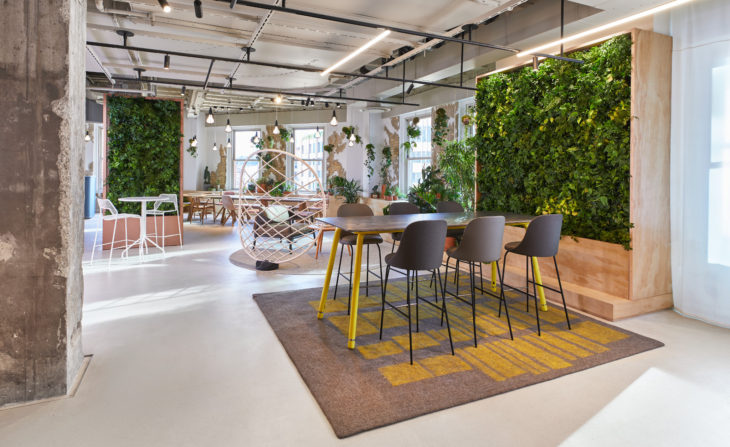
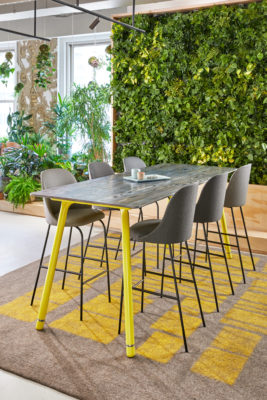
During NeoCon 2019, Lew Epstein, General Manager for Coalesse + Turnstone + Steelcase Brands, John Hamilton, Director of Global Design, Coalesse + Turnstone + Steelcase CMF and Bill Browning, Partner at Terrapin Bright Green, came together for a thought-provoking roundtable discussion on “Biophilia in Workplace Design – Through Implicit and Explicit Applications”.
The conversation delved into how biophilic design helps create environments that people truly want to work in, exploring how to balance both the physical and symbolic approach to biophilic design — from incorporating plants and natural elements to light patterns that mimic the outdoors. Below is a transcript:
Lew Epstein: Whether integrating or simulating nature in the workplace, how do you choose which approach to use?
Bill Browning: If I can get living nature into the space, that’s my first choice. But a lot of places I can’t get the maintenance culture, or the budget to buy into that. And so, if I can’t do real nature, I may have to default to simulated, but not fake. Because we get sometimes a very negative response to fake.
Instead I’ll take the approach of things that are inspired by nature, but are not fake replications of them. But they have enough of the characteristics that people are cognizant of them, going, “I know what that is.” That’s a pleasurable response. And if I can get the real living thing in the space, that’s always my first preference.
Lew Epstein: Can you speak a little bit more as to why?
Bill Browning: Living nature is not static, right? The plants change, the fish in the tank are moving around. They’re moving around in patterns that I can’t predict. You know, if you put a pendulum in, that’s something moving in the space. And for the first day it’s kind of interesting. And after the first day, you don’t even so much notice that it’s there anymore, because it’s the same movement all the time.
But if it’s a movement pattern, that changes. One of the things we’ve been looking at is non-rhythmic dynamic art installations. There’s one in a lobby in a biotech building in Cambridge Massachusetts. It looks like a series of several hundred little white umbrellas. And they open and close based on an algorithm of a flock of birds moving through the sky. You see them do this in the space. Never the same. It’s been there for years and the people in the building are still utterly enthralled and fascinated by it.
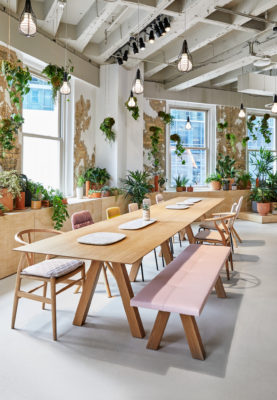
John Hamilton: I think it’s interesting because, this question makes me feel like you have to make a choice. It feels like an “or” question. And what I’m always thinking is “and.”
I want to have surfaces that maybe have a symbolic biophilia reference to them, that maybe even have a colorway that references nature, that I compose the things within a space, or even objects that we’re creating in a way that are less formal, or less the same, as Bill was mentioning. So that there is a dynamic nature to them. And then I also have some living plants, or moving water, or a sound. For me, it’s always “and”. It’s like I’m doing this, and I’m going to do that, and I’m going to do this, so that I don’t have to choose one over the other.
And if somebody said to me, “I can’t afford a whole… I can’t make that whole wall a living wall.” Then, okay, let’s make a print on there that’s a graphic representation of something that will elicit a thought, and then still have some areas with living plants.
You don’t have to choose between one and ten, there are ways of sprinkling things in and still getting some of what the really under-arching desires are, which is trying to bring that in, in a way that people do respond to.
Bill Browning: And that diversity is really important.
John Hamilton: Yes.
Bill Browning: One of the things we’ve learned, I could cover this entire wall with a green wall that was all one species, and it’d be kind of cool, right? It’d be nice. But I could cover just one panel of this wall with a highly bio-diverse designed mixture of plants, and that will get our attention and hold our attention way more than covering the entire wall with a monoculture.
It’s also why if I look at a little terrarium, it’s much more interesting than those same plants just in little pots sitting here and there.
We’ve asked some psychologists about that, and they say it’s a mirroring neuron projection process of saying, the brain goes, “Look, there’s a little habitat. So if a little habitat is surviving here, this must be a good place for me to be.”
When you see that bio-diverse wall you’re also getting, “Look, there’s a habitat. There’s a habitat so this must be a good place for me.”
John Hamilton: I think it’s interesting too because we’ve done some experiments where we built these large walls, and the walls were primarily made up of the same matter. But because they were built by hand – we were putting in reindeer moss into a field by hand – it was so inconsistent, and the surface was so varied, and the colors, there was a variegation to the color as well, that it didn’t feel like a monoculture.
Bill Browning: Because it’s not.
John Hamilton: It kind of was, but-not…I think even just having that kind of uncontrolled sense to it, there’s a diversity to it, even in its simplicity, and it still worked.
It was, for us, a funny thing, because it was one of these spaces that you saw everyone wanting to have their photograph taken next to. They’d walk up to the wall and take selfies, and get a group, and everyone would take their photo.
You never know what you do, and what people will think about it. It was one of the most Instagrammed things that we’d ever installed, we never thought that going in.
Somebody said later, “Wow, that was really successful,” because it was the most Instagrammed thing that we’ve ever done, and I never imagined that. But it drew people in. There was a thing about it that everyone loved. And we’re sitting there trying to talk about some of the objects we’ve designed, and they wanted to have their photograph taken with the wall.
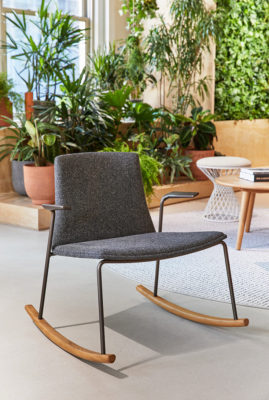
Lew Epstein: I think the two of you just built off of one another’s ideas in a very thoughtful way. It’s not an ‘either / or.’ It is a ‘both / and.’ And it’s very much about dosage, right? Whether it’s dosage by budget, or dosage by, “this is really all you need.” Or dosage by, “I need that kind of diversity in different medium: living, graphic, audible, you name it.” How would you describe the value of these complementary solutions, in qualitative, or quantitative terms?
Bill Browning: For us in some cases it’s trying to figure out what I need to achieve in the space, this helps me filter what interventions I might want to do. If a space is really about stress reduction then I’ll focus on that. If it’s about cognitive performance, I’ll focus on some elements around that.
But a lot of times I want to get a little of both. One of the things we have been looking at is, where can I do interventions that impact the most people? For instance, we’ve got a project that’s a redesign of an airport terminal. And it’s 400,000 square feet on one level. So, obviously I’m not going to be able to put things all over the place. I’m going to have to pick where I’m going to do my interventions.
When you really think about airport passengers, you discover that they’re not all the same, right? A family traveling for the first time with a bunch of young kids has a much different experience than a business traveler who just breezes right through and goes to the gate. Where are these people stressed? Where is a senior citizen, slightly disabled, stressed along the way? A high school sports team?
You map out the routes, you think of the narrative of how people will experience this space, and then turn that into a plan, and you put hash marks on that plan along their route, where they’re most stressed. Then you look at that, and you find the overlaps. Where the most of those overlap tells you, “Here’s an optimal place to spend my budget to do a really good intervention.” Then I pick from that what intervention I want to do.
And at airports, surprise, surprise, intervention spot number one is the queue for security screening.
Lew Epstein: I’m shocked.
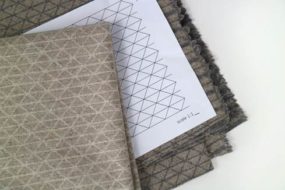
Bill Browning: That’s the number one spot. It turns out there are several others, but that’s the one where the largest scale intervention is going to go in this project.
I mean, it’s really nice that you have the beautiful green wall in the foyer or the lobby of your office building. Fantastic for the folks who work at the front desk all day long.
But why not put it on the work floor where the most people can see it for the extended period of time? And put it in some place where a fan or even the air handling system occasionally makes things move, that gets your attention, gets you to look up, and look away, maybe for 40 seconds, and change your brain state.
Lew Epstein: That’s great. I think what’s interesting about the airport example is it’s a repeatable methodology, and yet the situation, be it an airport, a corporate environment, whatever, is the variable, it’s always going to change. But you have a standard methodology to apply, which is great.
Before I turn it over to John, one of the reasons I find a value in this kind of a question about qualitative and quantitative, is how we make decisions, in what we want to buy, what we’d want to surround ourselves with. There are decisions we make with our heads, and we want to quantify it, and we want all the evidence, and Bill has given us lots of examples of quantifiable evidence. And then there are decisions we make with our heart. We want it. We can’t necessarily justify it, but we buy it anyways, because we feel something. And in this domain of biophilia, since we are pre-wired to have this affinity for life, they’re decisions that we’re making in so many different ways. Whether it’s integrating real nature, or the simulating of nature that is taking hold in many different ways.
Part of the challenge for us as designers, as makers is, what is it that we need to do to provide the reason to buy? Is it quantitative evidence? Or is it really a qualitative story that’s going to resonate with your heart?

John Hamilton: I think there are these moving variables that are constantly appearing in how we think about what we’re doing. They move from a thing that’s a differentiator, and means something to people, to a given, and what they expect. You know, at one point it was quality. “I want something that’s really strong, and that’s going to last a long period of time.” There was one company that could make something that was very strong, and others that couldn’t – then they used that as the differentiator, and why people chose them.
But then people realized that everyone had to make something that was strong, and that was the expectation. And once everyone else could make something strong as well, that discussion kind of went away, and it moved to something else. It may have moved to ergonomics, it may have moved to scale, and I can get enough to fill a whole building out. It keeps moving. I think recently it was environmental, and people were talking about, “What’s the thing made out of? Do you use good materials? Is it eco- friendly?”
You know, right now I think we’re hearing a lot about biophilia. But for me that’s really more connected to wellbeing, and I think wellbeing is going to be one of the next things. That’s one of the things I’m very thoughtful about, and working on integrating into what we’re doing and how we approach the problems we’re looking at.
I think that we, as people, are more conscious and thinking more about the things we’re eating, and the things that we’re putting into ourselves, the ways that we’re navigating our lives, the choices we’re making, and they’re about wellbeing.
The companies that we’re going to work for are going to have spaces that support our wellbeing.
Whether they have a yoga class at lunch, or they have great green walls that are near the workers – those are all small interventions, and reasons that, connect to my wellbeing, that make us care more about spaces, and the choices that we’re making.
That’s where we think about: what are those qualities we can bring into something, and then peel that back to why? The ‘why’ is more around us, coming back to the individual, and the health of that person, mental health, physical health, all of those things that we’re now being more conscious of, and are going to try and solve for.
Bill Browning: Yes. Absolutely. What’s interesting about some of your examples, especially the quality, they’re very performance centric, and there’s a performance centric part to the workplace for all of us to perform as employees of the respective companies we work for, the performance of the workplace, et cetera.
But there’s a nice connection between the performance of the workplace and the appearance of the workplace. Many of the images that you’ve seen have the very strong visual appeal. And then our allegiance to the workplace strengthens, because, as you were describing, you know that they care about your wellbeing. And when all of that comes together, I think that’s a really powerful approach to the future.
John Hamilton: We had something interesting happen recently where technology all of a sudden enabled something for all of us, that’s really changed work and work culture. We are at a time where we’re all given a laptop, and then they said, “Now you can go sit wherever you want.” And then they gave us the cellphone, and they said, “Now you don’t have to have a landline, and you can go work wherever you want.”
You hear about companies trying to get people to come back. And I think the challenge with giving people all this freedom, and allowing them to go work wherever they want, is now they have choice. It used to be that you had to go to work to do work. You now don’t have to.
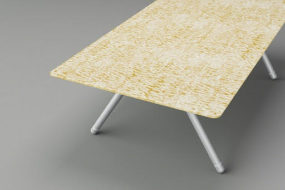
We have to now create spaces that people want to choose to go to. I’m competing against a coffee shop, a hotel, a home, anywhere else somebody might want to work. You don’t have to go to work anymore to do work. So, the spaces that we create for people better be great.
We have this aspiration to create spaces that, at the end of the day you feel better than when you walked in there at the beginning of the day. Because I don’t think that there’s a lot of spaces that I go to that have that.
Most people I talk to, when they leave at the end of the day, they feel exhausted, they feel drained. I think that’s partly because of the space itself, partly because of the things they’re doing, but partly it’s hard, the spaces are hard on them.
Imagine a space that at the end of the workday you actually say, “You know, that wasn’t so bad. I feel pretty good. I’m going to go out for dinner, or run, or do something else.” And I think that’s where, again, with that wellbeing part, we want to move to.
Lew Epstein: I think that’s a great high bar. Is there a biophilia design concept, or a prototype that you’ve explored, or want to explore looking forward?
John Hamilton: Yes, sure. One of the things that I want to explore and that we’ve chatted about a little bit is this idea that everything has to be green. It seems like if you ask somebody to do something with a biophilic sensibility to it, they want to make it green. And often they’ll make it look like leaves or something.
I’m curious about people who grow up in environments that don’t have green things around them, and what their biophilic response is, and whether they would still respond to things that are green, or because I grew up in a desert, I actually want waves, and brown. Or I grew up in an arctic region, I want waves and white and blue.
That is something in us, that we don’t even understand and know about. Do we just respond to the color green because it means something to me, even if I’ve never seen a green thing in my life? Or, is it a response to the outdoors, and living things? And even though my understanding of outdoors and living things is different than yours because of where I was brought up, do I still have a response to it?
I’m curious about the person who was brought up in the green area. When they see waves in brown, and waves in white and blue, will they too go, “Oh my God, I love ice fields. I would love to live on the fjord,” because they see it as nature as well?
I think we’re programmed as designers. I see so much now, people bringing biophilic things – living matter – into spaces, and it’s always a plant, it’s always a green plant. What are those other things we can do that can help that are from other parts of the world? A more global approach to how we think about our definition of what biophilia is.
Bill Browning: It touches on a field called topophilia.
John Hamilton: That was the word I was going to use!
Bill Browning: There’s a period of time in childhood in which you bond to the ecosystem and place where you come up. And it’s a fairly defined age bracket. There are some of the responses in biophilia that we’re seeing that are universal, and then others that get filtered through place and culture, and gender, and other issues.
Increasingly, we’re getting interested in the overlap of the biomorphic forms and the fractals and light patterns. We’re experimenting with a major hotel brand, with their new room prototype that when you walk into the room, when you open the door, in front of you is that little foyer that you’ve got with the closet there, and the entrance to the bathroom, and the mechanical system overhead. It’s the ceiling slightly lowered. And we’re putting a perforated metal screen in that, and LEDs behind it. So when you open the door, you’ve got the pattern of light and shadows on the floor and the walls that will make you feel like you’re in a forest, as you step into that guest room.
It’s just light patterns. The pattern isn’t literal leaves, it’s very much an abstraction. We’re getting more and more interested in, “How can I do these abstractions and elicit the response?”
Lew Epstein: That’s great.
[Turns to the audience]: Folks, it’s your turn. Any questions?
Audience member: The sell. How do you sell this idea, to conservative administrations, clients, bosses? Any tips as far as explaining the benefits of biophilia, and the overall value, even short term or long term?
Bill Browning: We were having lots of conversations with prospective clients where we’d get the, “Wow, that’s really nice.” The head was bobbing up and down, “Wow, that’s really nice. That’s beautiful.” And we thought, “Yes, this isn’t going anywhere.”
So we wrote a paper called The Economics of Biophilia and said, “Okay, let’s set this out. What are the measured results?
Basically, any place we could find a dollar number that we could attach to it, being brutally gross about it, we did that. The paper is on the Terrapin website, anyone can download it for free. [https://www.terrapinbrightgreen.com/report/economics-of-biophilia/]
And every few years we update it as we get new data, and new examples. The current edition is 2015, and we’re getting ready to do another edition.
John Hamilton: The other thing to think about is attendance, health and wellbeing. It all connects back to that, then it connects to insurance. If you can get your people there, they’re healthier when they’re there, they’re happier when they’re there, they’re more engaged in the work that they’re doing, they’re engaged with others, and so they’re collaborating more, and innovating faster.
There’s a lot of metrics you can tie to productivity, and the amount of people that you have, actually coming to work. Less absenteeism. Often, it’s because of the principles of biophilia and what you’ve done in the space.
Bill Browning: Corporations are spending huge amounts of money on wellbeing right now. And yet what they’re finding, and what we’re hearing back from a number of the corporations we work with, the participation rates for some programs are frequently less than 20%, a really bad return on investment. So why don’t we spend that money, a little bit of that money, in the design of the space, with stuff that is just there. Right? I get it. I don’t have to go out of my way to have that experience. That experience is there for me all the time.
Audience member: Are there certain plants that you gravitate towards when incorporating into a space? Or does it just vary on a client? What goes into that process?
Bill Browning: It’s not so much the plants as much as don’t do a monoculture. For instance, I could do a great row of big ficus trees, it’s kind of cool. But what will get people’s attention? Gaze attention will focus more if I have, say, one of those, and three or four other small plants around it, that form what winds up being interpreted as a little habitat.
It gets back to the brain going, “Look, a habitat. I can be here.” Monocultures don’t occur that frequently in nature. And when they do occur in nature it’s usually an ecosystem that’s not all that healthy. It’s usually been overrun by invasives.
So, when we see a diverse ecosystem in a place, the brain goes, “Okay, that’s good. We’re here.”
John Hamilton: The other thing to think about is access to light, and the robustness of the things that you’re choosing. There’s the desire to have these things happen everywhere within a space, yet not all space supports all types of plants.
Depending on the adjacencies, where things are being placed or being thought about is critical to some of those choices of species, or what plants themselves you might choose. Some are just tougher in indoor environments, and especially corporate indoor environments. And it’s terrible to see dead plants.
Lew Epstein: Not a good sign.
Bill Browning: No. Seeing a bunch of dead plants, it elicits the wrong cognitive response.
John Hamilton: The more you can choose things that can survive in some of these places that don’t have as much light as we would love them to have, the better.
Bill Browning: So, the one thing I will say about color in plants is, avoid the ones that have a sort of yellow, brown hue to them. Because that’s usually a color that you see when a plant is dying right? And you don’t want to elicit the, “Look, it’s a dead, dying plant. Should I be here? If that plant can’t stay alive here, should I be here?”
John Hamilton: They’re like the new canary in the coal mine.
Bill Browning: Exactly, yes.





